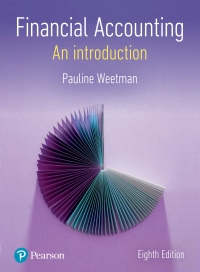What is the resultant figure for trade receivables (debtors), after deducting the provision for doubtful debts, that
Question:
What is the resultant figure for trade receivables (debtors), after deducting the provision for doubtful debts, that will appear in the statement of financial position (balance sheet)
of the company at the end of Year 2?
(a) £36,000
(b) £40,000
(c) £44,500
(d) £47,000
The following information applies to question.
At the end of its first year of trading, a company has total trade receivables (debtors) of £20,000. The company accountant decides that there is an element of doubt about the ability of some of the trade receivables (debtors) to make payment. The accountant therefore sets up a provision for doubtful debts in the amount of £3,000. During the company’s second year of trading, trade receivables (debtors) previously regarded as doubtful, in the amount of £500, succeed in making payment to the company.
At the end of its second year of trading, the company has total trade receivables (debtors) of £40,000, including the remaining trade receivables (debtors) identified as doubtful at the end of the first year. On reviewing trade receivables (debtors) at the end of the second year, the company accountant concludes that a total of £4,000 of receivables (debtors) should be classified as doubtful.
Step by Step Answer:






